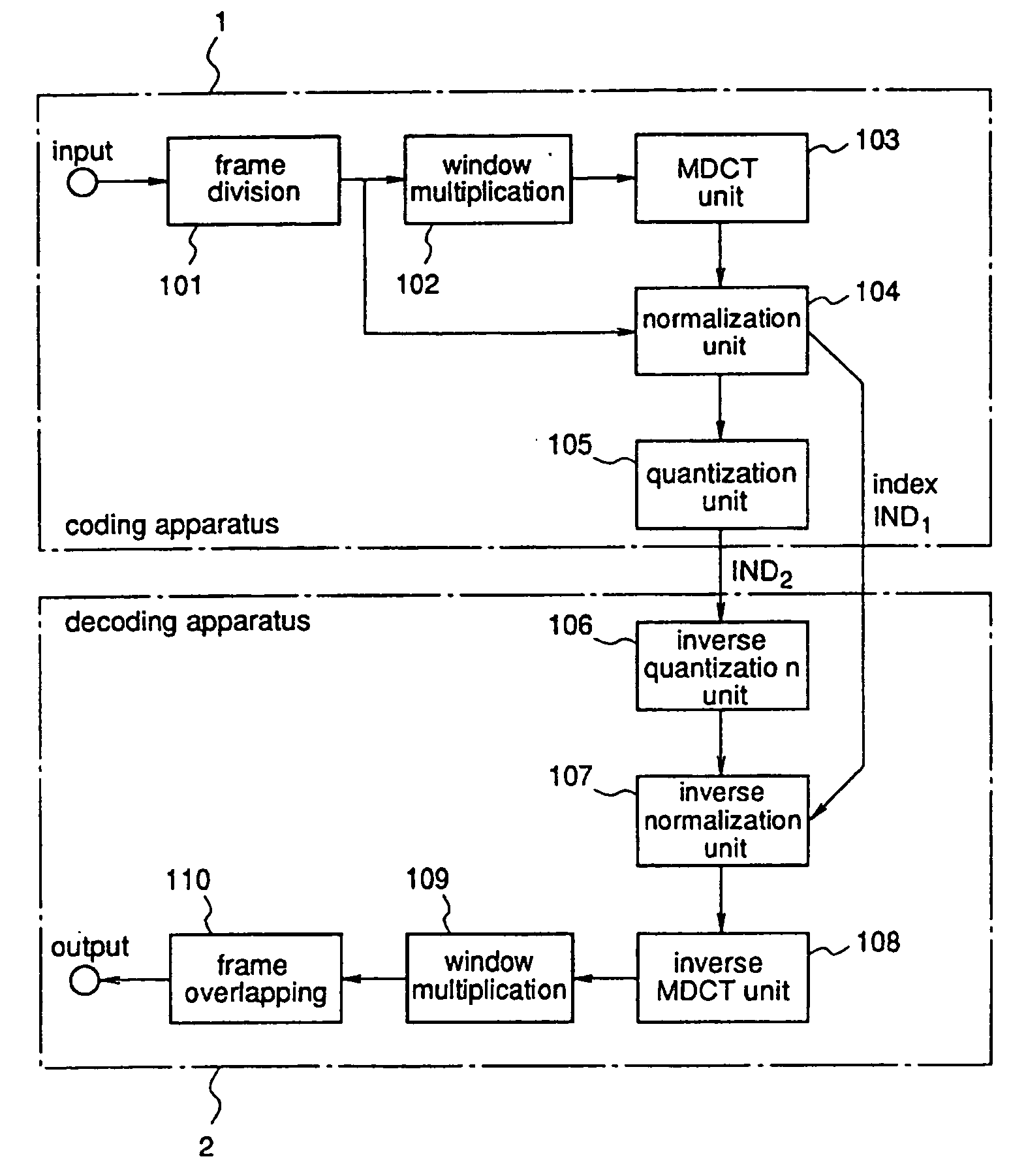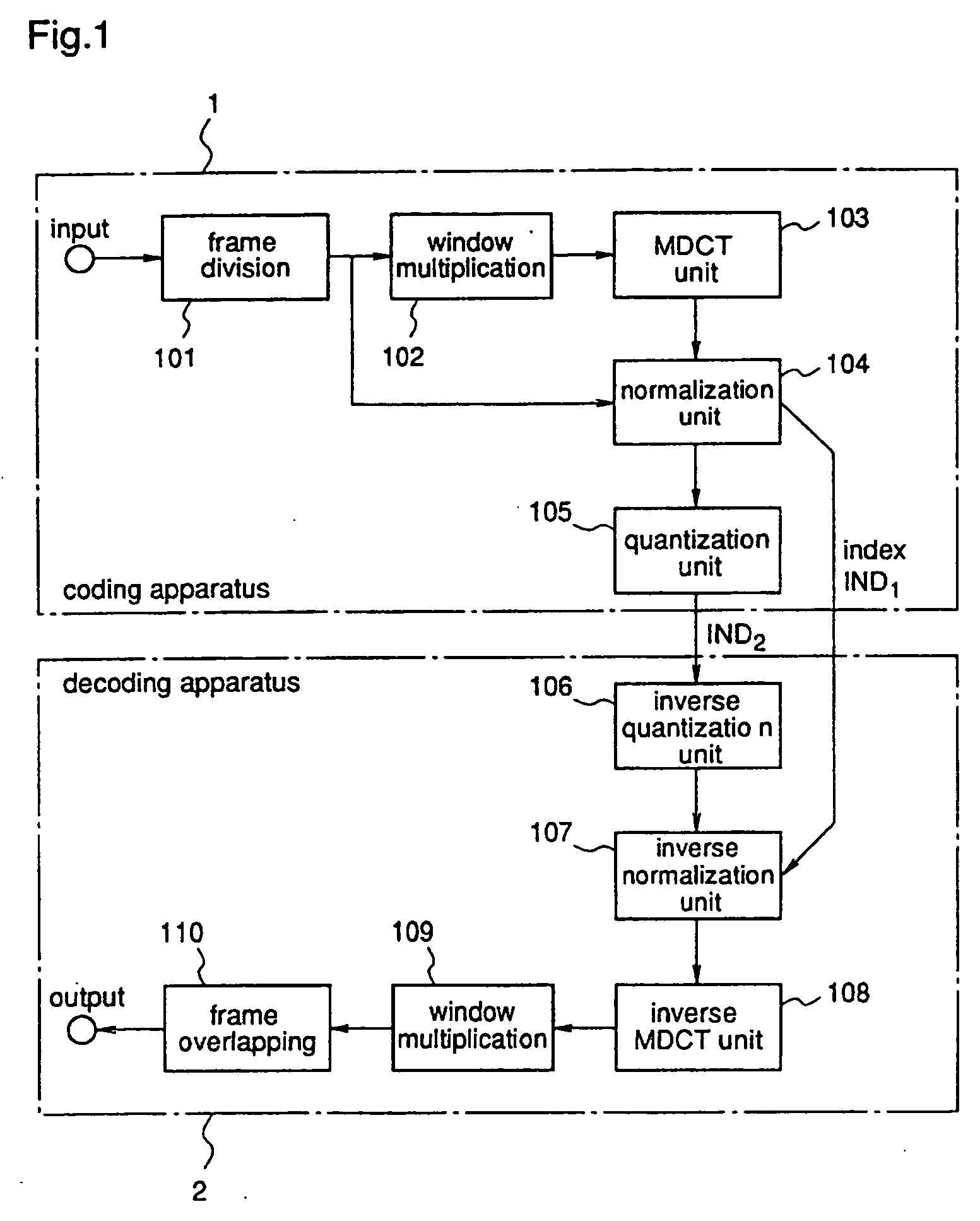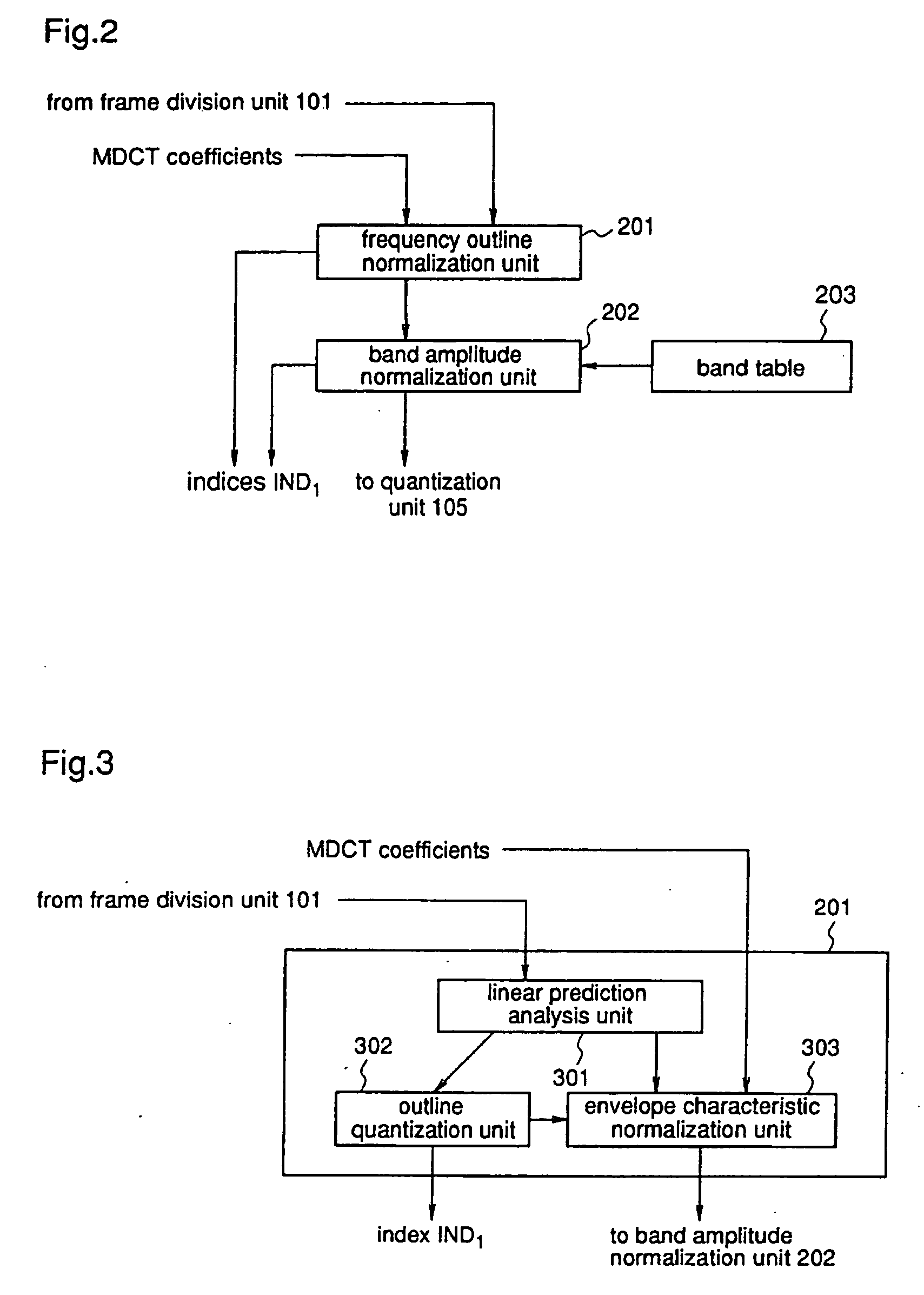Multistage inverse quantization having the plurality of frequency bands
a multi-stage, frequency band technology, applied in the field of audio signal coding apparatus for coding an audio signal, can solve the problems of large amount of memory, large amount of calculation, and inability to obtain high-quality sound at a high compression ratio, and achieve less quantization errors, dramatic heightened effects, and high quantization efficiency
- Summary
- Abstract
- Description
- Claims
- Application Information
AI Technical Summary
Benefits of technology
Problems solved by technology
Method used
Image
Examples
embodiment 1
FIG. 1 is a diagram illustrating the entire structure of audio signal coding and decoding apparatuses according to a first embodiment of the invention. In FIG. 1, reference numeral 1 denotes a coding apparatus, and 2 denotes a decoding apparatus. In the coding apparatus 1, reference numeral 101 denotes a frame division unit that divides an input signal into a prescribed number of frames; 102 denotes a window multiplication unit that multiplies the input signal and a window function on the time axis; 103 denotes an MDCT unit that performs modified discrete cosine transform; 104 denotes a normalization unit that receives both of the time axis signal output from the frame division unit 101 and the MDCT coefficients output from the MDCT unit 103 and normalizes the MDCT coefficients; and 105 denotes a quantization unit that receives the normalized MDCT coefficients and quantizes them. Although the MDCT is employed for time-to-frequency transform in this embodiment, discrete Fourier trans...
embodiment 2
Next, an audio signal coding apparatus according to a second embodiment of the invention will be described using FIG. 5. In this second embodiment, only the structure of the quantization unit 105 in the coding apparatus 1 is different from that of the first embodiment and, therefore, only the structure of the quantization unit will be described hereinafter. In FIG. 5, reference numeral 501 denotes a first sub-quantization unit, 502 denotes a second sub-quantization unit, and 503 denotes a third sub-quantization unit. This fifth embodiment is different in structure from the first embodiment in that the first quantization unit 501 divides the input MDCT coefficients into three bands (high-band, intermediate-band, low-band) and quantizes the respective bands independently, and quantization sections for the respective bands, which constitute the first sub-quantization unit 501, correspond to so-called “divided vector quantizers”. Generally, when quantization is carried out using a meth...
embodiment 3
An audio signal coding apparatus according to a third embodiment of the present invention will be described using FIG. 6. In this third embodiment, since only the structure of the quantization unit 105 in the coding apparatus 1 is different from that of the above-mentioned first embodiment, only the structure of the quantization unit will be explained. In FIG. 6, reference numeral 601 denotes a first sub-quantization unit, 602 denotes a first quantization band selection unit, 603 denotes a second sub-quantization unit, 604 denotes a second quantization band selection unit, and 605 denotes a third sub-quantization unit. This third embodiment is different in structure from the second embodiment in that the first quantization band selection unit 602 and the second quantization band selection unit 604 are added.
Hereinafter, the operation will be described. The first quantization band selection unit 602 calculates a band, of which MDCT coefficients are to be quantized by the second su...
PUM
 Login to View More
Login to View More Abstract
Description
Claims
Application Information
 Login to View More
Login to View More - R&D
- Intellectual Property
- Life Sciences
- Materials
- Tech Scout
- Unparalleled Data Quality
- Higher Quality Content
- 60% Fewer Hallucinations
Browse by: Latest US Patents, China's latest patents, Technical Efficacy Thesaurus, Application Domain, Technology Topic, Popular Technical Reports.
© 2025 PatSnap. All rights reserved.Legal|Privacy policy|Modern Slavery Act Transparency Statement|Sitemap|About US| Contact US: help@patsnap.com



